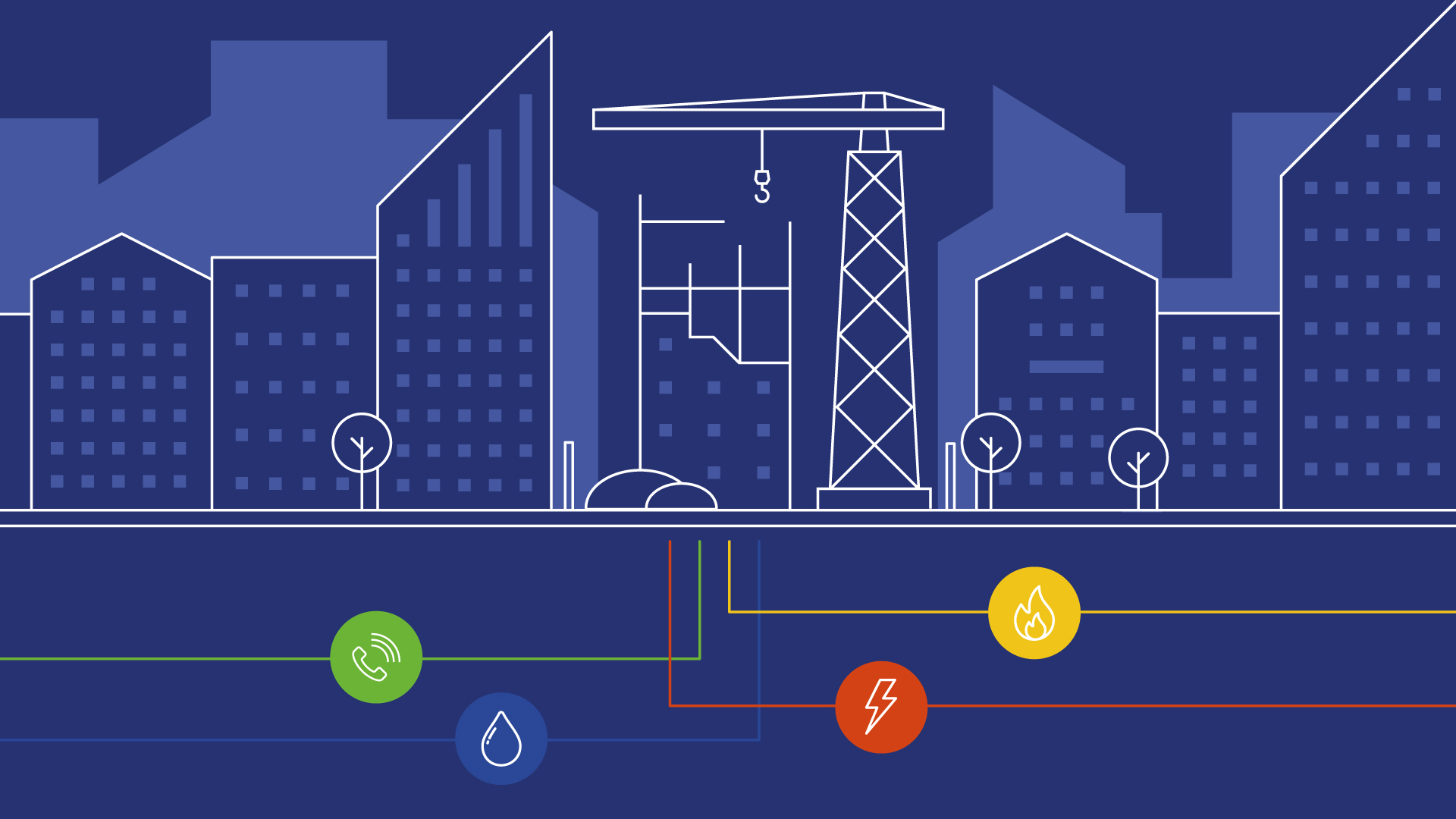A utility diversion is when utility apparatus needs to be relocated or altered in some way. This is normally done when existing utility infrastructure is constraining the development of a site. For example, an electrical cable may run underneath land where a developer wants to build houses and therefore has to be moved. Diversions can be necessary on both private and public land.
Understanding what is in the way
Whilst utility records can provide a starting point, it is essential that a PAS 128 survey is undertaken to confirm the depth and line of existing utility equipment. Also important is a visual inspection to determine above ground equipment, such as cabinets, pillars and substation etc. Identification of equipment is essential when it comes to understanding the cost and timescales involved in moving utility assets and can help to avoid equipment strikes. Our utility consultants at Premier Energy can add value to your scheme by assisting with the diversion process. See more details about our Diversion service.
Understanding the cost of utility diversions
When clearing a site ready for development or changing road layouts as part of a new development, it is often necessary to relocate or divert existing utility equipment, so it does not constrain the development. With so many asset operators now in place, the process and coordination of these works can be complex and costly. There are two types of diversion estimates, a C3 Budget Cost or a C4 Detailed Cost Estimate (see Jargon below). As utility companies are obliged to charge the actual cost of diversion works, these costs can run into the millions of pounds. Sometimes an alteration of the plans development is more cost effective than paying diversion fees.
Understanding utility diversion timescales
Utility diversion timescales are dependent on the type of equipment and its construction. For example, diverting part of the national fibre network takes significantly longer than diverting the telephone network serving local properties. One difficulty with diversionary works is that guaranteed standards do not exist; companies generally set their own standards which means receiving quotes or plans can sometimes take a long time (delays of over 6 weeks). With our 25 years of experience, the team at Premier Energy can advise on the likely timescales that are associated with diversions.
Utility diversion jargon
- C2 – C9 Process as defined in the New Road and Street Works Act 1991
- C2) Preliminary Enquiries – get details/records from undertakers
- C3) Draft Scheme/Budget Estimates – details on affected apparatus and estimated cost
- C4) Detailed Estimates/Design – final design submitted, timescale and detailed cost estimates
- C5) Scheme Commencement – notify undertakers
- C6) Issue of Main Orders – issue work orders
- C7) Construction – monitor works, possible changes to work orders
- C8) Claims – if work is delayed
- C9) Invoicing and Payment.
- New Road and Street Works Act (NRSWA) – provides a legal framework for street and highway works in the UK. It contains a Code of Practice for Diversionary Works.
- National Joint Utilities Group (NJUG) – trade association representing utilities companies and contractors on street work issues. They set guidelines on the depths that each utility service should be buried beneath the ground and the separation of buried services.
- Health and Safety Guidelines (HSG47) – Health and Safety guidance that companies follow when constructing or excavating on street works. It outlines the potential dangers and gives advice on how to reduce the risk for people working near underground services.
- PAS 128 – a methodology/standard for underground utility surveys in the UK. It was developed by the British Standards Institution (BSI), working with the Institution of Civil Engineers (ICE).
- Electromagnetic Locators (EML) – devices that can detect electromagnetic fields and/or radio frequencies given off by utilities services underground, such as a Cable Avoidance Tool (CAT).
- Ground Penetrating Radar (GPR) – pulses of high frequency radio waves are sent into the ground which are reflected or refracted by utilities infrastructure.
- Trial holes – Sometimes physical trial holes are added to the survey process in order to verify the results of other survey methods and confirm their accuracy.
- Easement – provides companies with a permanent right to install and maintain equipment on private land.
- Wayleave – provides companies with a temporary right to install and maintain equipment on private land. The company must make annual payments to the landowner and the agreement can be terminated by the land owner.
- Leases – grant utilities companies with use of a building for a set number of years, normally at least 40. Utilities companies may place apparatus including substations in leased buildings.
Contact our team of experts for more information about our Diversion service and our Site Investigation Report.

